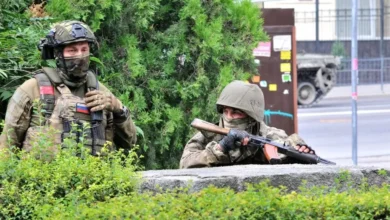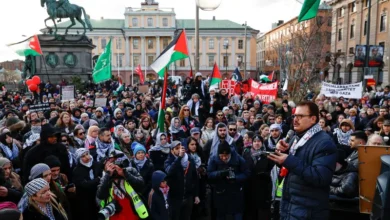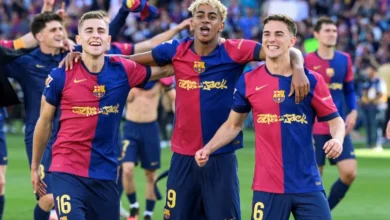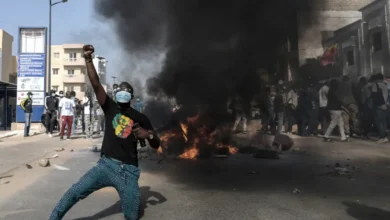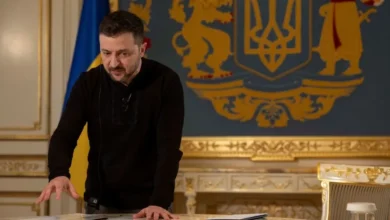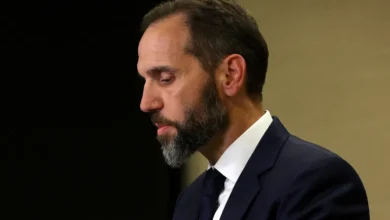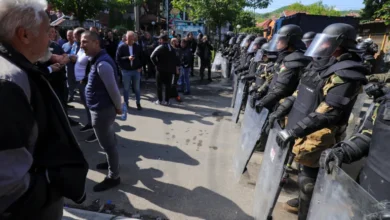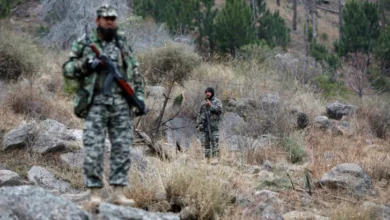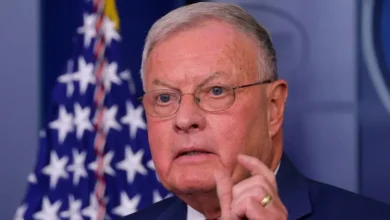What do the IMF and foreign debt have to do with Kenya’s current crisis?
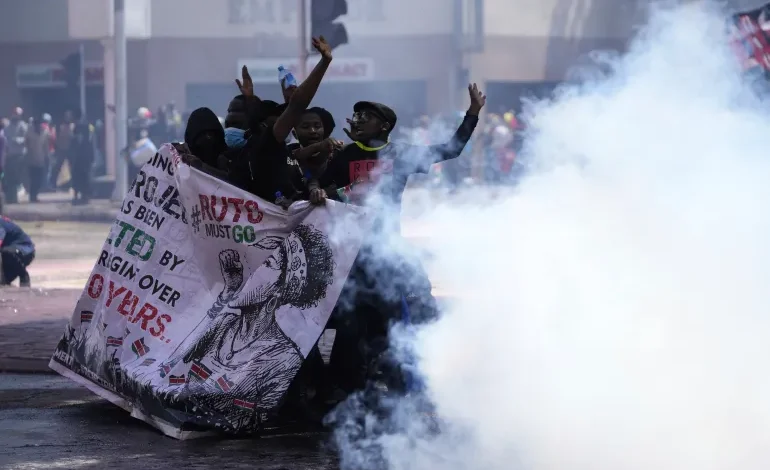
Weeks since protests began, determined Kenyans continue going out to voice their frustrations with the government.
But when demonstrators first took to the streets in June to rally against proposed tax hikes, it was not only President William Ruto and members of parliament who came under fire.
In the protests that later turned deadly, placards were raised denouncing the International Monetary Fund (IMF) and World Bank, which were accused of causing the crisis. “IMF, World Bank, Stop the Modern Day Slavery,” one placard read.
Across the capital, Nairobi, graffiti denouncing the organisations is visible even as protesters continue to demand Ruto resign.
So what is the IMF’s role in the current crisis, and what are Kenyans now demanding from the organisation?
What did the IMF do?
For years, multilateral lenders, especially the IMF, have had bad reputations in African countries for providing loans to desperate countries based on stringent conditions that critics said have always disproportionately affected the poor.
African leaders, including Ruto, have also criticised international lenders for what they said are disproportionately high interest rates compared with other developing countries.
In Kenya, that anger is fresh because Ruto’s now-withdrawn tax hikes as well as similar legislation passed in 2023 are both linked to IMF loans as Kenya staggers under the weight of a heavy debt crisis.
While some of the complaints against the IMF are true, African leaders are often to blame, Dumebi Oluwole, an economist with the data intelligence start-up Stears, told Al Jazeera. The higher interest rates, she said, are often because of records of default. The stringent conditions from lenders like the IMF have also been applied to distressed countries elsewhere, like Greece, which went through an economic crisis in 2009 and was partly bailed out by the lender, but African leaders often rely on options that hurt the majority, she said,
“African leaders are the sellouts,” she said. “We all know that IMF loans come with conditions, but some leaders, when asked to raise revenue, will choose taxation rather than cut costs. Then they’ll blame the IMF. Someone can only dangle crumbs in your face when you don’t know how to cook.”
What is the debt situation in Kenya?
When Ruto entered office in August 2022, Kenya was already in a crisis. Its external debt was about $62bn, or 67 percent of its gross domestic product.
Former President Uhuru Kenyatta had borrowed heavily from commercial lenders and countries like China to finance huge infrastructure projects, including a rail line that links Nairobi to the port city of Mombasa and 11,000km (nearly 7,000 miles) of tarmacked roads. Most of those loans were commercial, meaning they had high interest rates. Meanwhile, the infrastructure failed to generate the expected revenue.
Inflation pressures from COVID-19 also lingered. Added to that were the supply chain disruptions in agriculture in Kenya. All these combined meant food and the general cost of living were soaring in 2022 and so were Kenya’s debts as interests accumulated.
Currently, its debt has reached $82bn, about $8bn of which is owed to China. Other creditors include the IMF, the World Bank, the United States and Saudi Arabia. The debt also includes domestic borrowing. More than half of government revenue goes towards debt repayments.
When did the IMF come into the picture?
In April 2021, Kenya under Kenyatta and then-Vice President Ruto entered into an agreement with the IMF for relief.
That came in the form of a 38-month programme the IMF said would help Kenya manage its debt and create a conducive economic environment for needed private-sector investment. Under the programmes, Kenya is set to unlock $3.9bn in funding. A separate climate fund was also approved at $542m.
The IMF conditioned the loans on hiking taxes, reducing subsidies and cutting government waste – measures it said would increase government revenue while reducing spending.
Those measures kicked off last year. Ruto since 2022 has made the IMF programme a priority. Disbursements are based on periodic reviews of how well the government has pushed through some of the reforms. The last review in January unlocked $941m.
What are some IMF-backed reforms that Kenya has pushed through?
- After taking office, Ruto suspended subsidies on fuel and fertilisers as part of the programme. Fuel subsidies were reinstated in 2023 after protests broke out.
- The Finance Bill 2023 was also backed by the IMF. The bill, which passed in June 2023, introduced a 2.5 percent housing levy for employed people and raised the VAT on fuel from 8 to 16 percent. Demonstrators took to the streets to protest the bill last year, although turnout was not as high as the protests this June.
- The now-withdrawn Finance Bill 2024 with its tax hikes was backed by the IMF. It was set to generate $2.7bn. Analysts said Kenya still needs to fill that gap to meet some targets under the IMF programme.
- The IMF loans helped Kenya avoid defaulting on a $2bn Eurobond that matured in June. The country does not have any pressing repayments in the short term.
How has the IMF responded to the protests?
Ruto rolled back the proposed tax hikes on June 27, a day after the protests turned violent. Police had opened fire on demonstrators who breached barriers to enter the parliament building, prompting MPs to flee. Ruto said he would not sign the bill into law and his government would listen to the people.
